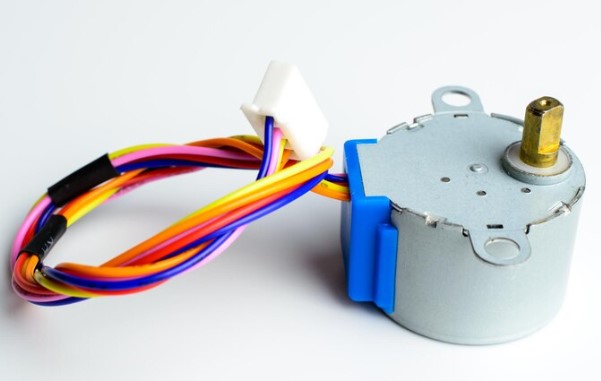Stepper motors are a ubiquitous feature in the world of engineering and robotics, known for their precision and versatility. They provide an essential link in countless mechanized systems, from hard drives and CNC machines to 3D printers. Within the realm of stepper motors, two common variations stand out: unipolar and bipolar. Each type offers distinct advantages and limitations that can significantly impact their performance in various applications. For those venturing into the intricate world of motor control, understanding the differences between these motor types is essential. In this comprehensive analysis, we will explore the structural, operational, and practical disparities of unipolar and bipolar stepper motors, giving engineers and enthusiasts the insights they need to choose the right motor for their projects.
Unipolar Stepper Motors: The Basics
Unipolar stepper motors are the more straightforward of the two types, often favored for their cost-effectiveness and ease of use. A hallmark of the unipolar motor is its multi-coil design, with each phase containing a center-tapped coil. When powered, current is directed through these coils in a specific sequence, causing the motor to move in precise increments known as steps. The magnetic field within the motor shaft is then energized by means of the center tap, ensuring unidirectional rotation without the need for complex circuitry or reversing the current flow.
Applications and Advantages
Unipolar motors find wide application in devices that require fine positioning, such as printers, plotters, and precise media feed systems. Their chief advantage lies in the simplicity of their control systems, making them an ideal choice for beginners or in situations where cost is a significant factor. The design also results in fewer power components and lower power consumption, leading to cooler operating temperatures and increased lifespan.
The Drawbacks of Unipolar Steppers
Despite their advantages, unipolar stepper motors suffer from a couple of inherent drawbacks. One of the most significant is their lower torque output compared to bipolar motors. This is a result of the center-tapped coil design, which divides the available current and reduces the overall power provided to each phase. Additionally, the construction of the coils leads to decreased efficiency as the motor operates, which can limit the speed and reliability of the motor in some applications.
Bipolar Stepper Motors: A More Complex Solution
Bipolar stepper motors are characterized by their simplicity in construction and operation, as well as their robust torque characteristics. These motors feature only one winding per phase and do not require a center tap, which leads to a more efficient power usage and increased torque output. The driving circuitry for bipolar motors can be a little more complex, typically necessitating an H-bridge arrangement to facilitate current reversal, but this added complexity also brings benefits in motor performance.
High Torque, High Precision
The primary advantage of bipolar motors is their raw torque output, which is often significantly higher than that of their unipolar counterparts. This makes them a preferred choice in applications that require heavy loads or high acceleration rates. They also offer superior precision in positioning, making them an excellent choice for CNC machines and other tools where accuracy is critical.
Greater Flexibility But With Higher Costs
The complexity of their driving circuitry is a double-edged sword for bipolar motors. While it enables more powerful and precise control, it also means higher costs and more intricate setup requirements. Bipolar motors often require more robust drivers and are generally more expensive to implement and maintain. The trade-off here is between the initial investment required and the enhanced performance characteristics that bipolar motors offer.
Choosing the Right Motor for Your Project
Selecting between unipolar and bipolar stepper motors is a decision that requires careful consideration of your project’s specific needs and constraints. When deciding, keep the following criteria in mind:
- Control System Complexity: If simplicity is crucial and precise positioning isn’t a strict requirement, unipolar motors may be the better option. For complex or high-performance systems, a bipolar motor’s higher torque and precision might be necessary, despite the more intricate control requirements.
- Power and Torque Requirements: If your application involves heavier loads or rapid movements, the bipolar motor’s increased torque is a significant advantage. For lighter applications that prioritize power efficiency over performance, a unipolar motor might suffice.
- Cost and Size Constraints: The financial factor plays a role in all engineering decisions. Consider the initial cost of the motor, as well as the potential costs of additional circuitry for driving and heat dissipation. Additionally, if space is limited in your application, the smaller form factor of a unipolar motor might be advantageous.
The Future of Stepper Motors
The division between unipolar and bipolar stepper motors is not arbitrary; it reflects the diverse needs of the engineering community. However, technological advancements are continually blurring the line between these two classes of motors, with sophisticated control systems, driver improvements, and material science innovations enhancing their capabilities.
Integrated and Smart Solutions
Newer integrated solutions are emerging that aim to combine the precision of bipolar motors with the simplicity of unipolar ones. This integration often involves advanced microcontroller architectures, smart motor technologies, and improved motion profiles. The result is a step motor that offers the best of both worlds, delivering precise control alongside the ease of use that has traditionally been the domain of unipolar motors.
Advances in Materials and Design
Another area of exciting growth is in the materials and design of the motors themselves. Advances in magnet technology, such as the use of rare-earth magnets, are boosting the torque outputs of both unipolar and bipolar motors. Simultaneously, enhancements in motor design are leading to more efficient coil structures and higher step resolutions, providing a broader range of applications for both types of motors.
Conclusion
In the realm of stepper motors, no one type is universally superior. Unipolar and bipolar motors each have their unique strengths and use cases, offering a spectrum of trade-offs between simplicity, torque, precision, and cost. By understanding the nuances of these motors and evaluating them against the specific requirements of your project, you can make an informed choice that optimizes performance and efficiency. Furthermore, keep a keen eye on the horizon, as advancements in technology promise to further refine these workhorses of the engineering world, ensuring that they remain indispensable tools for years to come.



